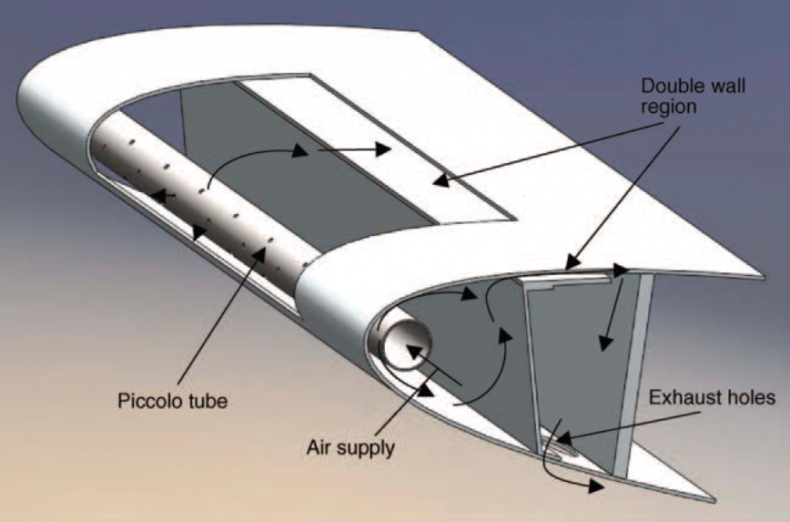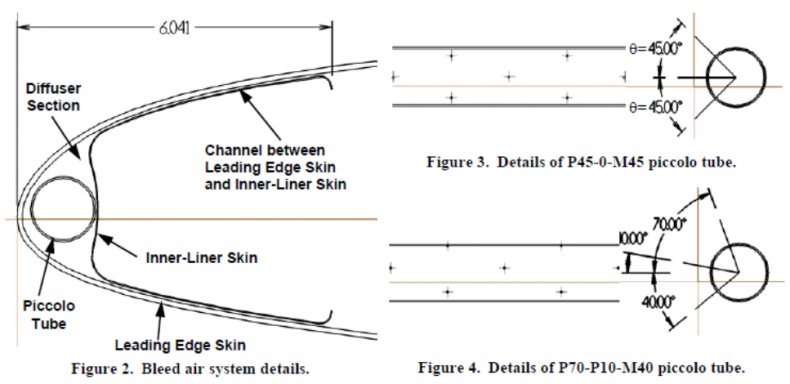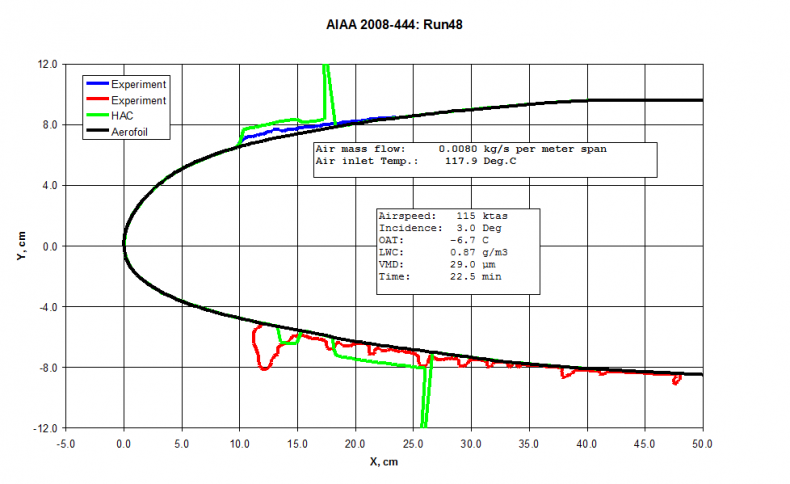HAC – Hot-Air Code
The code is based on a modified version of the AeroTex Icing Heat Balance, IHB, code. The Hot Air Code, HAC, performs a steady-state thermal analysis on a thin strip structure in two dimensions, which is heated from the air from an internally mounted piccolo tube arrangement. The code performs a ‘Messinger’ type heat balance on the breeze surface, to calculate the local freezing fraction and surface temperature. Empirically based heat transfer correlations are used to calculate the internal heat transfer coefficient distribution along with the internal heat flux distribution produced. The local ice growth rate (mm/min) is then calculated from the local freezing fraction and the cloud water droplet impact rate. The code will calculate whether ice will grow, the surface runs wet, or the water is fully evaporated. The code requires a user input file which specifies the distribution of water catch, heat transfer coefficient and surface pressure ratio, or pressure coefficient, as well as a file which specifies the specific Hot-Air (HA) ice protection system (IPS) to be modelled.
The code can currently model systems containing
- Piccolo tube (User can specify the number of rows, hole spacing, hole diameter, mass flow rate and inlet air temperature)
- Double wall region
- Wall jet region
- Adiabatic flow region (no heat flow)
- Plenum region (region of low flow, warm air)
Example results
Wichita State University published a range of results for a HA model test. See AIAA-08-444 for more details
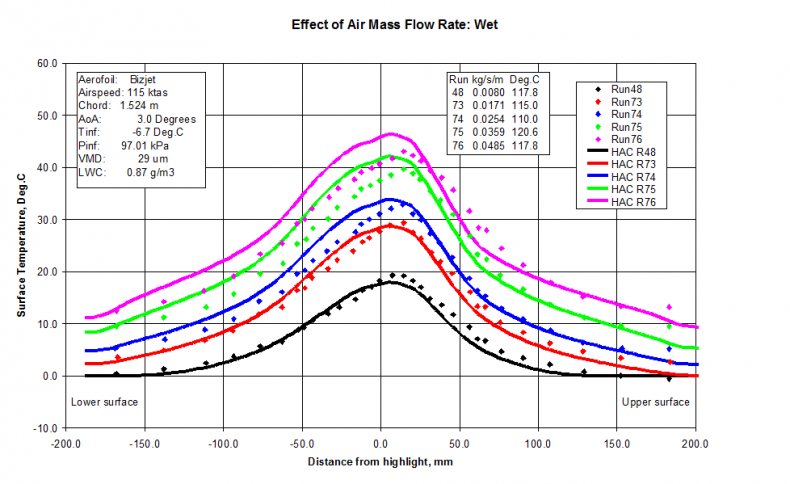
Temperature prediction
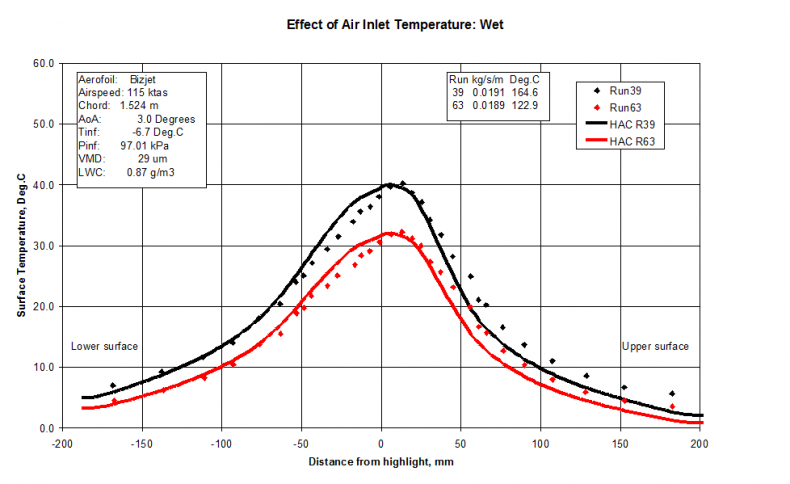
Validation test case: Effect of bleed air temperature. See AIAA-2008-444

